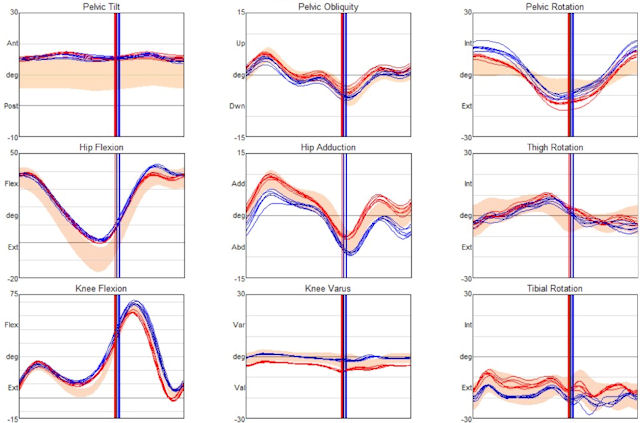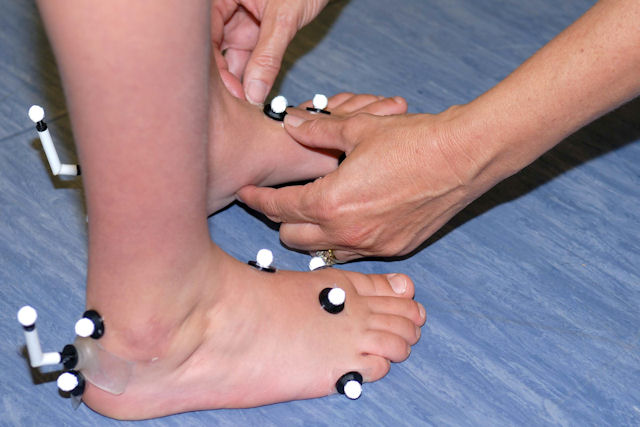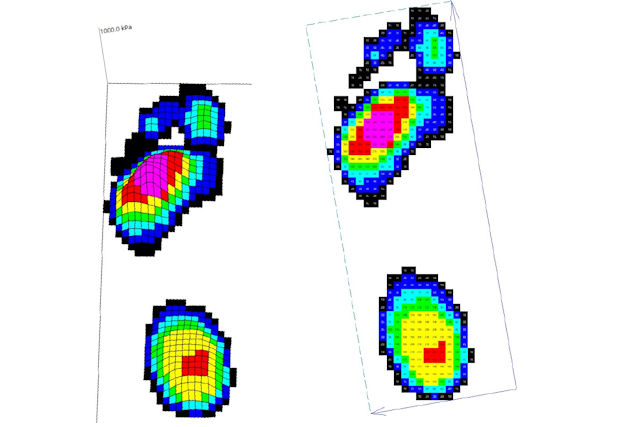The specific measurements gathered will depend on the referral question provided.
Additionally, the patient's individual capabilities and use of walking aids or orthotics may influence which measurements can be obtained.
Kinematics
Kinematic measures describes the spatial movements of the body, including joint angles, displacements, velocities and accelerations.
These measurements provide information about what is happening at each joint, but does not explain why the movement occurs., as they do not consider the forces that cause the motion.
In gait analysis, the lower limbs are modelled as rigid segments. By examining the interaction of one segment relative to its proximal segment, we can calculate joint angles.
The movements are observed across three planes: sagittal, frontal and transverse. As a result, we can produce kinematics graphs (like the ones below) that illustrate the motion of each segment in all three planes for both the left and right sides throughout the gait cycle.

Kinetics
The internal and external forces involved in the execution and control of movement. We measure the ground reaction force with force platforms embedded in the walkway.
Plantar pressure
Plantar pressure measurements allow us to observe the distribution of force across a single foot step (stance phase).
These measurements enable us to track the path of force distribution from initial contact through to foot-off.


Electromyography
Measurement of electrical impulses of muscle activity. Routinely large surface muscle groups can be measured with surface electrodes such as rectus femoris, hamstrings, gastrocnemius and tibialis anterior.
Temporal parameters
- Cadence (steps/min)
- Speed (m/s)
- Stride and step length (m)
- Stride and step time (s)

